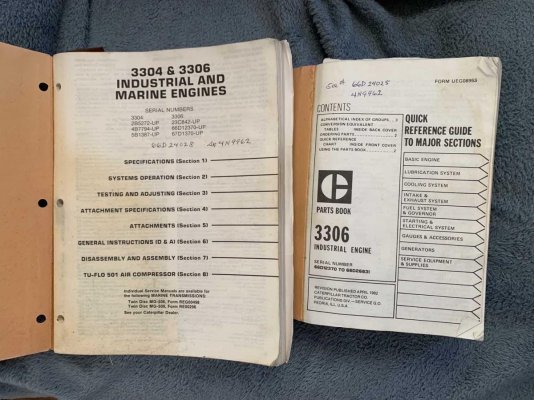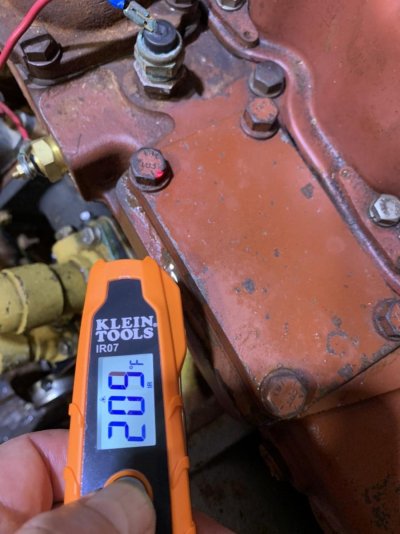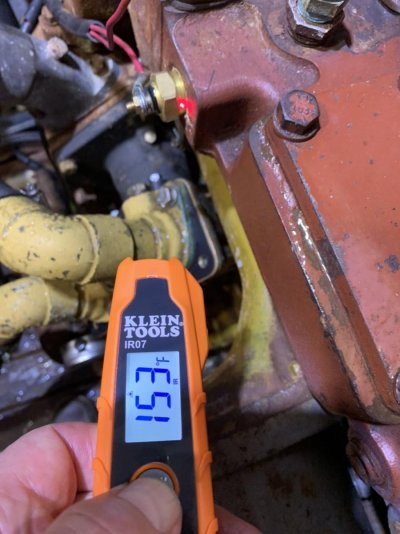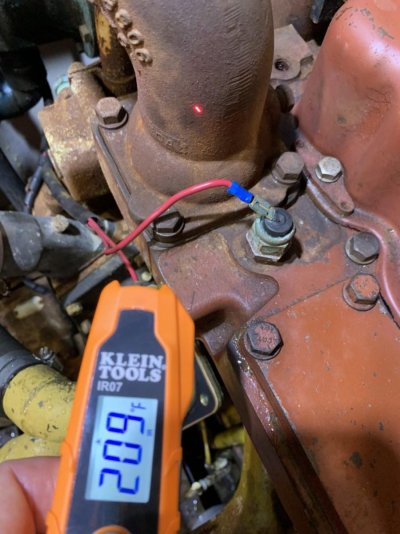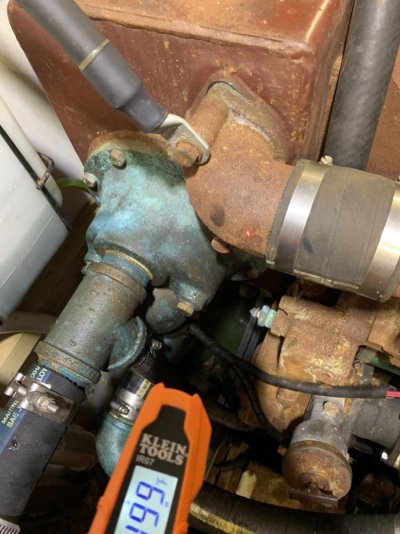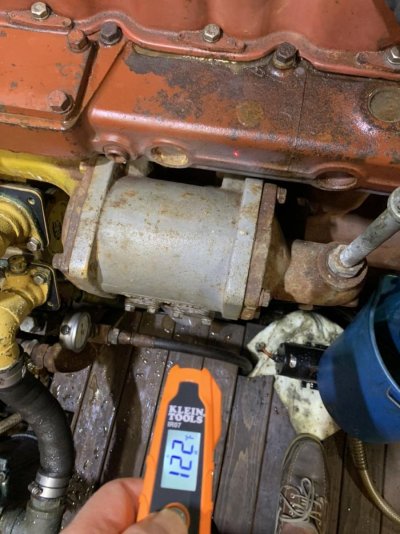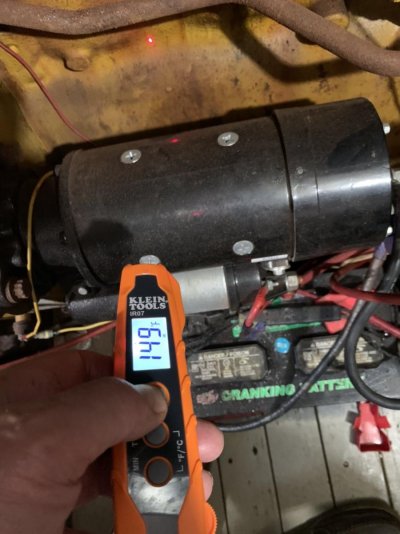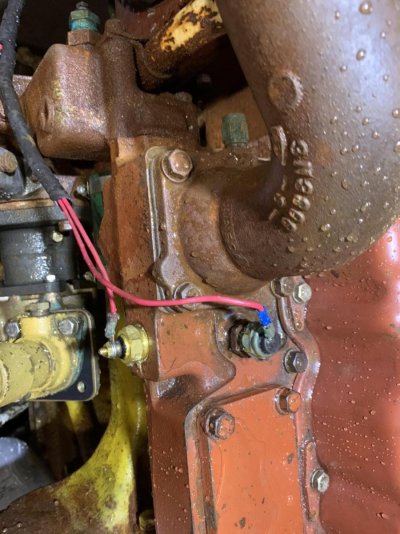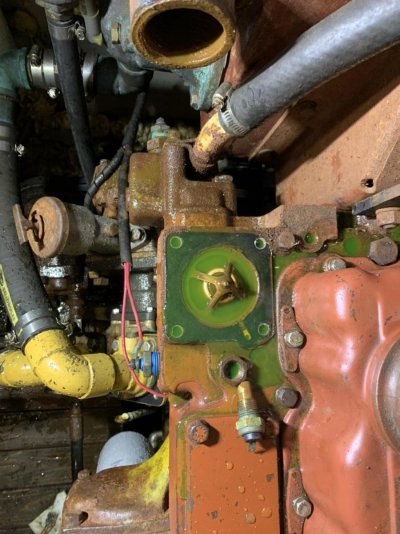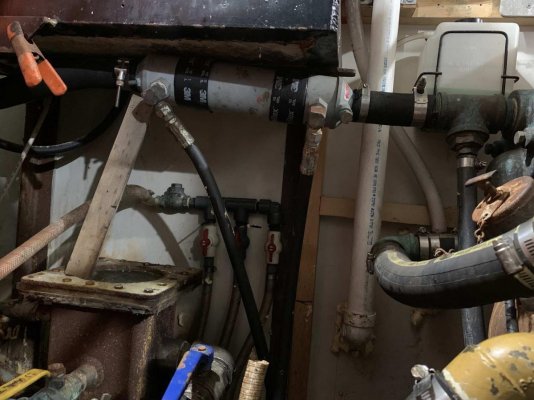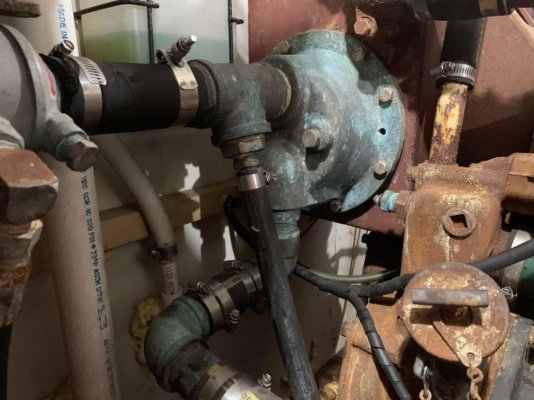LeoKa
Guru
I was doing hull cleaning underwater and as a novice, came to the idea to anchor the boat close to shore. It sounded nice to scrape the barnacles and standing on ground with my gear on. Well, it was a really bad idea. Unfortunately, there was a super low tide yesterday and my boat got grounded on rocks and mud. It was scary, but I’ve got lucky. Once the tide was up again, I moved the boat to deeper area. The plan was to continue scraping today. Unfortunately, the weather picked up and I was in the wide open. I’ve decided to return home and see, if I can continue work.
About 30 minutes after I left, I see that the rpm is going down. It stopped around 1500, but there was a sound, which was new. I stopped and went to the ER. What I could see was the seawater was bubbling out at the water pump section, where it connects to the engine. There is no gasket to see outside, so I was puzzled. My bilge pump was working, so I did not panic. However, I had another hour to go and I did not want to risk it. I have removed the seawater pump. When I did that, a gray muddy mix of water was coming out. The boat was rolling, so the seawater was still bubbling out, even with the engine shut. I could see where the pump’s shaft would go into a housing and there were some O rings and a partial gasket. The rings would not come out, so there was not much I could do. Besides, I was on anchor in the middle of the water. I had no choice, but put everything back and start the engine. When I did that, the grey muddy liquid shot out of the air exhaust, down to the ER floor. It stopped after a minute, but I could see that the filter housing was also full with mud and water mix. The seawater was still bubbling out at the pump, but I was able to pull the anchor and go slowly back home. I was almost at my spot when the overheating alarm came on, so I had to shut the engine. Bad moment. I was close to boats and docks. I started the engine again and i could see the temp went down suddenly I could moor my boat.
At this point, only clear water was bubbling out into the bilge.
I am not familiar with the engine, yet. I do have the manual and parts book, but I think I will need to replace few things, to make it work again.
Can someone explain to me what section of the engine is, where the pump connects with that shaft? Does it has to be replaced, or just removed for cleaning? I am sure the O rings need to be fixed, which will require removal. I just don’t know, how far do I need to disassemble that whole area? The seawater pump seems to be working properly, I just need new gasket for the hose connections.
I don’t mind the work and I know I will need to spend some money, but I am looking for directions.
Any questions are welcome. See photos attached.
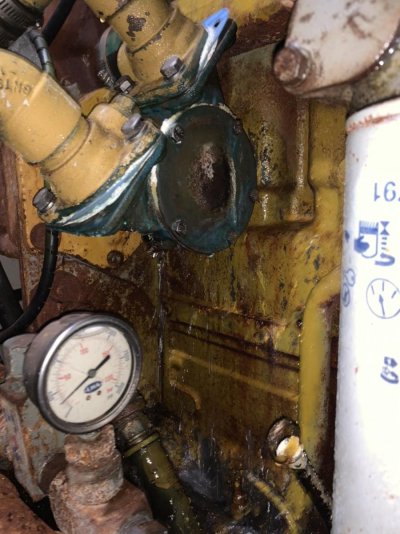
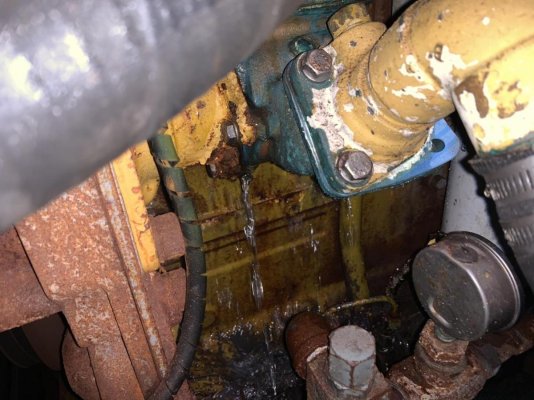
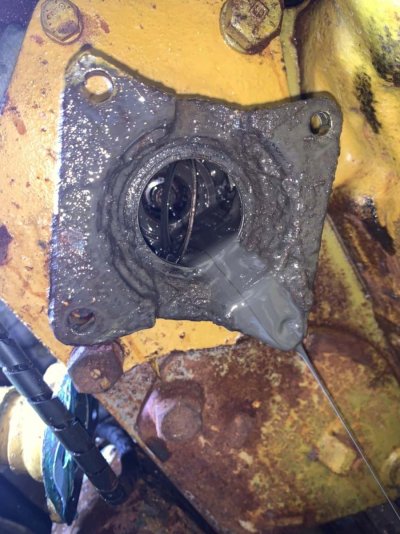
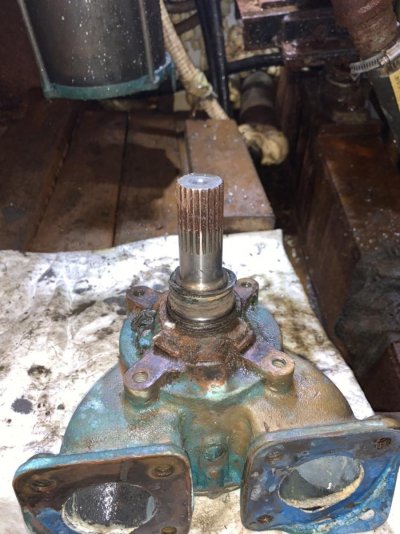
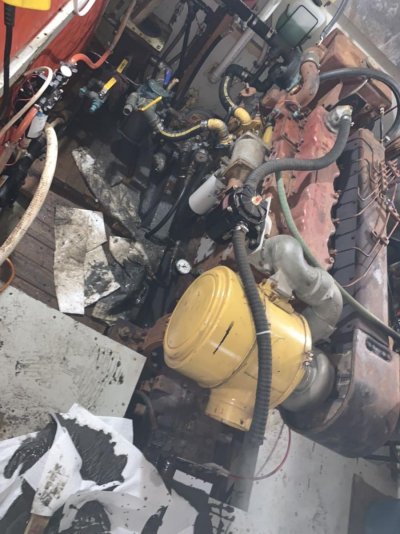
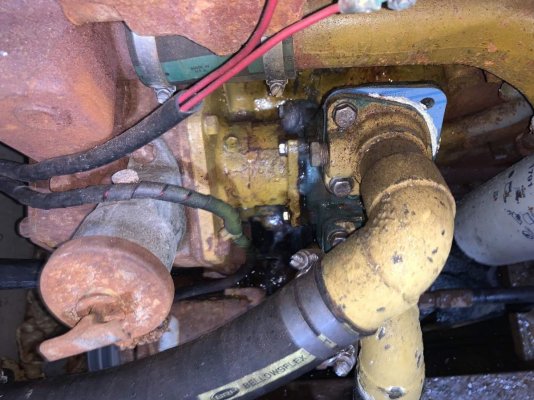
About 30 minutes after I left, I see that the rpm is going down. It stopped around 1500, but there was a sound, which was new. I stopped and went to the ER. What I could see was the seawater was bubbling out at the water pump section, where it connects to the engine. There is no gasket to see outside, so I was puzzled. My bilge pump was working, so I did not panic. However, I had another hour to go and I did not want to risk it. I have removed the seawater pump. When I did that, a gray muddy mix of water was coming out. The boat was rolling, so the seawater was still bubbling out, even with the engine shut. I could see where the pump’s shaft would go into a housing and there were some O rings and a partial gasket. The rings would not come out, so there was not much I could do. Besides, I was on anchor in the middle of the water. I had no choice, but put everything back and start the engine. When I did that, the grey muddy liquid shot out of the air exhaust, down to the ER floor. It stopped after a minute, but I could see that the filter housing was also full with mud and water mix. The seawater was still bubbling out at the pump, but I was able to pull the anchor and go slowly back home. I was almost at my spot when the overheating alarm came on, so I had to shut the engine. Bad moment. I was close to boats and docks. I started the engine again and i could see the temp went down suddenly I could moor my boat.
At this point, only clear water was bubbling out into the bilge.
I am not familiar with the engine, yet. I do have the manual and parts book, but I think I will need to replace few things, to make it work again.
Can someone explain to me what section of the engine is, where the pump connects with that shaft? Does it has to be replaced, or just removed for cleaning? I am sure the O rings need to be fixed, which will require removal. I just don’t know, how far do I need to disassemble that whole area? The seawater pump seems to be working properly, I just need new gasket for the hose connections.
I don’t mind the work and I know I will need to spend some money, but I am looking for directions.
Any questions are welcome. See photos attached.






Last edited:

